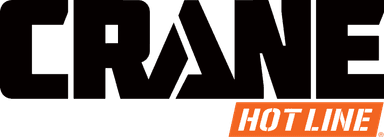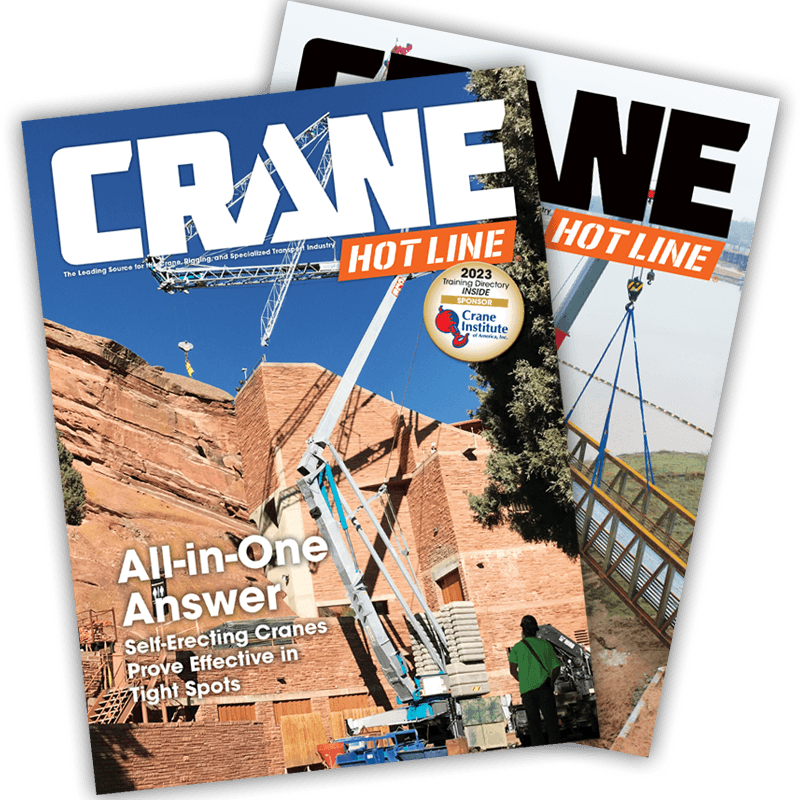Benefits of Member-Owned Captive Insurance
Using AI for Risk Mitigation in Alternative Financing
Editor’s Note: This is the third edition in a three-part series for Crane Hot Line readers to identify the merits of alternative risk financing, as compared with the volatility in traditional property-casualty insurance for today’s business owners in our crane, rigging and specialized transport (CR/ST) marketplace. As the final part of our series on alternative risk financing, this edition focuses on captive features, benefits and the inherent flexibility by integrating Artificial Intelligence (AI) for enhanced risk mitigation.
Crane owners’ participation in a member-owned group captive is a legitimate risk management arrangement. Group captive insurance programs have thrived since their emergence in the 1980s due to hard commercial insurance market conditions at that time, similar to today’s market.
The growth in group captives has continued across the U.S. marketplace due to key considerations:
- Market shortage of cost-effective crane coverage for individual insured programs.
- Recurringly rising costs and self-insured retention levels year over year.
- The need for new innovation in risk mitigation.
- A fresh alternative to stale existing options.
Group Captive Operating Characteristics
Member-owned group captives utilize a professional insurance captive management company that takes responsibility for the day-to-day operations of the captive including corporate governance, regulatory reporting, cash management, accounting, audit and tax coordination, providing the registered office and all corporate administration functions including compliance.
Additionally, the various functions of the captive insurance company, such as claims management, lost control, policy issuance, arranging reinsurance and actuarial services are “unbundled” to industry specific professional service organizations and administered by industry recognized and licensed specialty insurance organizations.
While the captive administration firm manages the day-to-day operations of the captive, each participating member company has a say in the decisions facing the captive. Typically, the captive’s board of directors is made up of all members, who each receive one vote on all operational decisions, regardless of their company size. Captive company bylaws address various organizational concerns, such as process and standards for allowing additional companies to buy in and become an equal shareholder of the captive.
Benefits of Group Captive Membership
The package of benefits provided by a member-owned group captive can be significant for crane owners. There are six major benefits in participating in a member-owned group captive:
1. Greater Control: One of the greatest benefits of a member-owned group captive as compared to traditional insurance is that it provides member companies with significantly greater control over their unique risk management concerns. The “unbundled” structure in group captives allows for crane owner members to help design risk mitigation plans as a required tool to reduce losses.
2. Lower Costs of Protection: According to the highly recognized Insurance Information Institute (III), member companies in group captives experience lower costs of insurance for three main reasons.
First, premiums to the captive are based (only) on the individual member company loss experience, which the member company can control and reduce.
Secondly, the cost of protection is reduced significantly when traditional insurers (loading) costs are excluded from the premium calculation.
And lastly, group captive member companies have proven to be safer than the average company according to data from the Bureau of Labor Statistics, III and Captive Resources-based market research reports.
3. Improved Claims Handling and Reporting: In the group captive, member companies have greater involvement in claims management, influencing claims-management strategy and ultimately have a direct impact on claims-management costs.
In a traditional insurance arrangement, crane companies must rely on the overly reactive traditional insurance claims model. Group captives unbundle each facet of the claims management process to derive a more cost-effective claims outcome with litigation containment functions built into the hybrid captive claims model.
Group captive members are often involved in working with their captive administrator and claims third-party administrator (TPA), directly for selecting proper local counsel and assistance with overseeing the process of investigation and claims resolution, in accordance with policy provisions.
4. Direct Incentives for Risk Management: Premiums to the member-owned group captive are established based exclusively on the member companies’ loss experience. Comparatively, in a traditional insurance arrangement, crane companies with excellent safety records and loss ratios far below the average in today’s crane insurance marketplace, are likely paying nearly the same premium levels as crane companies with much higher loss histories.
In a member-owned group captive, if a crane owner’s experience is better than the average experience in the crane market, they will realize lower-than-average premium costs. This incentivizes member companies to undertake more loss control efforts.
5. Direct Access to Reinsurance: Unlike traditional insurance plans, a captive can go directly to the global reinsurance market and purchase coverage at wholesale rates because it is essentially an insurance company. Further, the price for reinsurance coverage is driven by the captive’s own exposures and loss record, not the experience of the industry.
The captive does not have to work through a commercial insurer for this access, and this saves on the expenses associated with dealing with commercial insurers, such as commission costs, administrative costs and profit markup. Member companies can retain much more control over the selection of and arrangements with reinsurance partners.
6. Greater Potential for Profits: Member companies are rewarded for effective risk management in member-owned group captives because unused loss funds are paid back to the captive company in the form of a dividend (less provision for risk sharing).
Also, investment income earned on loss funds as well as capital and cash collateral accumulate for the members benefits. In traditional insurance arrangements, investment income is retained by the insurer and in fact is a major source of income.

Harnessing AI to Enhance Crane Captive Risk Control
Since the member-owned group captive structure contemplates “unbundled risk control services” some progressive crane industry leaders have expressed interest in the potential of AI for risk analytics and data to enhance crane operator risk awareness, as a feature in member-owned group captives.
Enhanced risk awareness is crucial for saving lives in crane operations. AI-driven innovation demands a shift from a tactical focus – how risk awareness is managed today – to a broader, strategic approach, emphasizing what a crane enterprise could implement to drive transformative risk improvement.
A key risk management advantage with member-owned group captive arrangements is that the crane owners decide the extent of AI design/utilization as part of their captive experience to control their own risk management destiny.
Why Join a Group Captive?
Joining a group captive often results in a reduced insurance premium over time. This is due to the fact that in a group captive, each member’s premium is based on its own most recent five-year loss history.
Group captives recruit safety-conscious companies with better-than-average loss experience. This contrasts with traditional commercial carriers which base premium on a number of factors, including industry-wide loss experience, statutory requirements and overall portfolio performance. This more expensive risk pool can result in higher premiums than a lower-risk company may obtain as a group captive member.
By the second and third year of membership, the increased focus on holistic crane risk management, including post incident claims management, can drive members premiums down even further.
According to the III, a recent study indicated that almost three-quarters of new bound policies in group captives resulted in lower premiums compared to members’ previous plans. Many members saw substantial savings, with about 30% of new policies reducing costs by 20% to 30% or more. Additionally, 72% of new members paid lower premiums compared to their previous insurance plans.
Heading Off Litigation Costs
In the face of dramatically rising litigation costs and jury awards in crane incidents today, it becomes critically important to focus on effective post claim mitigation strategies.
Group captives can be designed specifically to help member insureds control these rising costs through progressive incident management and shock loss protocols that contain litigation.
A captive TPA with a defined risk mitigation support system that includes corresponding national networks of local counsel, local independent adjusters, led by a national coordinating legal counsel has a fighting chance to prevail in today’s litigious environment. The flexibility to utilize the high-end litigation containment resources mentioned is thought to be one of the most beneficial features in member-owned group captive plans.
Conclusion
In addition to the potential for premium savings, member-owned group captives tend to benefit members through greater financial flexibility and customized crane industry specific protection against losses. This is due to greater control of and transparency into insurance program costs.
Improved risk mitigation support and enhanced safety are often the top benefits of member owned group captives. Extensive risk resources and support with both pre- and post-loss focus, in addition to continual measurement, drive continuous improvement.



